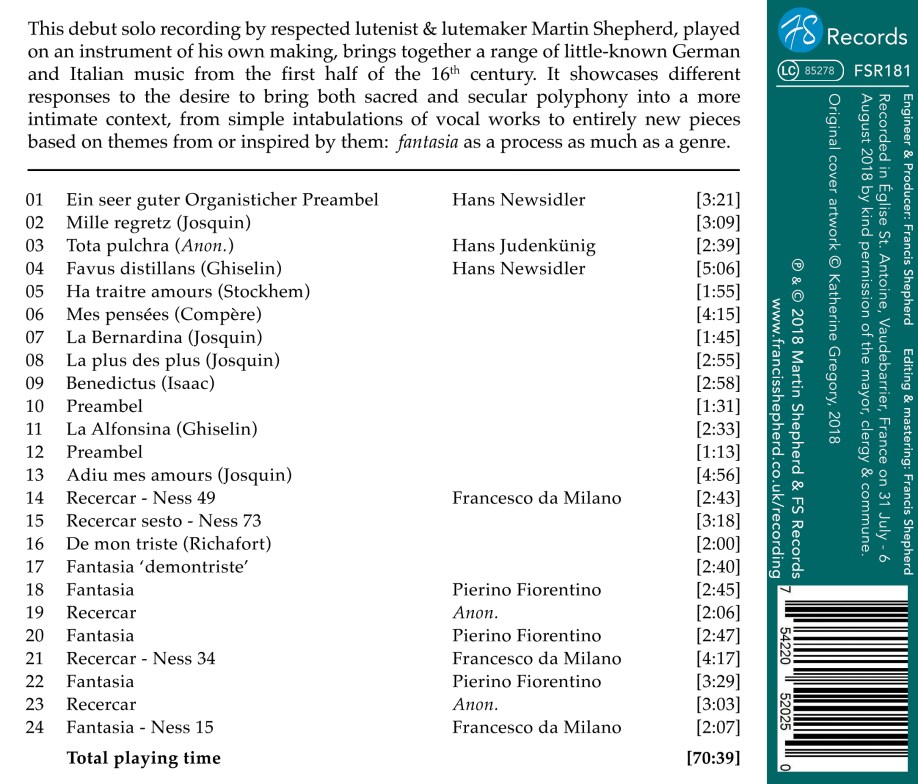

On this debut solo album, Martin plays a range of music from the 16th century, much of it inspired by vocal music of the time. Released in 2018, it is available now on the FS Records label as a CD and as a digital download.
Praise for Fantasia
The sound of the lute is exquisite… beautifully recorded.
Geoff K.
You play extremely well, with great feeling and your lute is just great. The sound is really excellent… Congratulations!
Roger T.
Very beautiful phrasing, flowing and nicely articulated… the recording is faithful, airy and not too reverberant… a beautiful disc, at once original and relaxing.
Pascale Boquet (Société Française de Luth magazine, Winter 2018) [trans.]
A wonderful selection of rarely recorded intabulations and lute pieces. Martin’s graceful playing and the transcendent ambiance of the recording combine to lift the soul – a much needed corrective in these noisy times.
James S.
I’ve received your CD two days ago and had time to listen through it few times already! It’s amazing! Very refined, breathy, touching playing… and I love the sound, crystal clear yet very warm… congratulations!!!
B. Zuljan


About the album
The idea of making a recording has been in my mind for many years, but only recently have the circumstances been favourable. I had access to a small local church with a great acoustic, and the support of the mayor and the local priest. Most important of all, I had the support and patient assistance of my multi-talented son Francis, who in addition to being an excellent musician (and therefore my best critic) has acquired the skills (and equipment) to make a great recording.
It had been nearly 20 years since the Lute Society published my anthology of renaissance music from German sources, but I still had more music to explore. In looking at the sources again I realised that the pieces I was most attracted to were the intabulations of Franco-Flemish polyphony. Hans Newsidler made some great intabulations, yet his music is hardly ever played, so I wanted to showcase his work, and in the process, shed light on the transformation of vocal music into instrumental music.
Once the compositional methods of the great composers were incorporated into the thinking of lutenists, the next stage was to compose new instrumental pieces using these techniques. Foremost in this development was surely Francesco Canova da Milano, whose wonderfully transparent style has been appreciated for many years. A lesser known figure, his pupil Pierino Fiorentino, was a master of realising complex polyphony on the lute and also deserved a place on this recording.
This project seems timely in the context of the modern lute revival. Ever since the beginning of my involvement with the lute nearly 40 years ago, I remember lutenists would play only fantasias and dance pieces, ignoring the intabulations of vocal pieces as though they weren’t “real” lute music. But of course if you look at the sources of lute music it is apparent that the majority of pieces are intabulations and many books consist of nothing else – it is clear that intabulation was a very important aspect of lute playing in the 16th century, but much neglected in the 20th. While the first half of my recording shows how lutenists adapted vocal music to their instrument, the second half shows how instrumental music was shaped by the compositional methods, and even the thematic material, of vocal music.